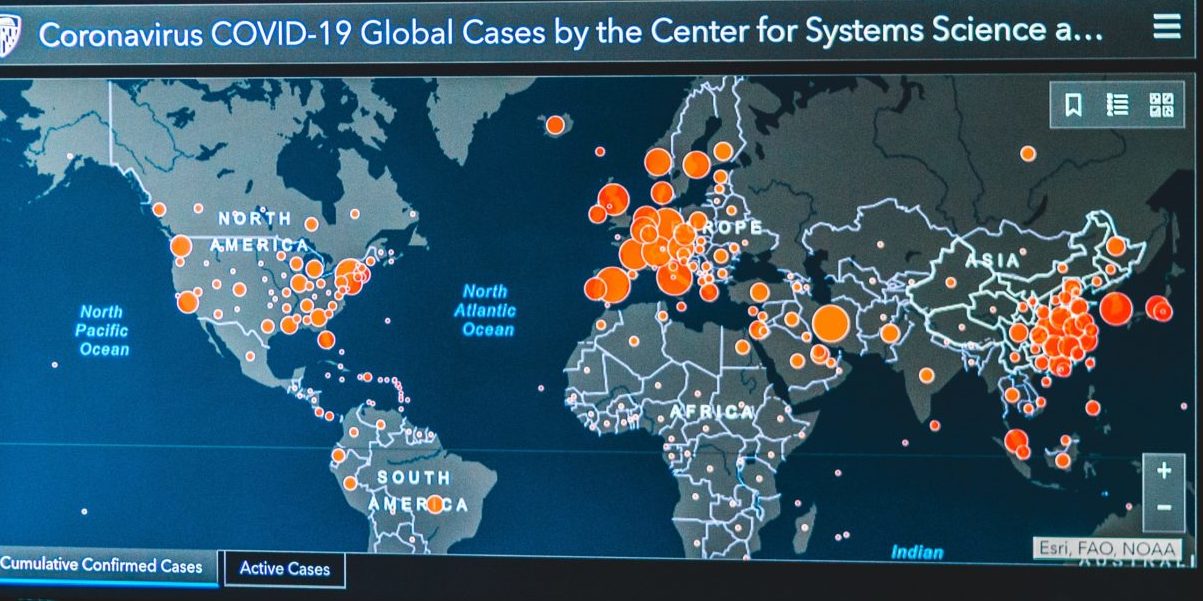By David Cayley
From the very beginning of the pandemic, there has been a steady drumbeat of scientific criticism of the policy of total quarantine – the name I will give to the attempt to keep SARS COV-2 at bay until a vaccine can be administered to all. The first instance to come to my attention was a paper by epidemiologist John Ioannidis, a professor of medicine at Stanford, particularly expert in bio-medical statistics. He warned of the “fiasco” that would result from introducing drastic measure in the absence of even the most elementary data, such as the infection mortality rate of the disease and the costs of immobilizing entire populations.[1] What some of these costs might be was spelled out in a May 16th article in the British journal The Spectator by Ioannidis’s colleague, Jayanta Battacharya, writing with economist Mikko Packalen of Ontario’s Waterloo University.[2] Entitled “Lives v. Lives” it argued that the deaths that would be caused by lockdowns were likely to far outnumber the deaths averted. They projected, for example, a massive increase in child mortality due to loss of livelihood – an increase completely out of scale with the effects of the pandemic. They also pointed out that lockdowns protect those already most able to protect themselves – those in comfortable situations for whom “working from home” is no more than a temporary inconvenience – and endanger those least able to protect themselves – the young, the poor and the economically marginal. By summer a stellar group of Canadian health professionals had recognized the same dangers as Battacharya and Packalen.[3] In their open letter to Canada’s political leaders, they pleaded for “a balanced response” to the pandemic, arguing that the “current approach” posed serious threats to both “population health” and “equity.” This group included two former Chief Public Health Officers for Canada, two former provincial public health chiefs, three former deputy ministers of health, three present or former deans of medicine at Canadian universities and various other academic luminaries – a virtual Who’s Who of public health in Canada. Nevertheless, their statement created barely a ripple in the media mainstream – an astonishing fact which I’ll return to presently.
This pattern has continued – most recently with the Great Barrington Declaration. This was a statement, issued on Oct. 6 by Martin Kulldorf, a professor of medicine at Harvard, Sunetra Gupta, a professor of theoretical epidemiology at Oxford, and Jay Battacharya of Sanford, whom I introduced a moment ago.[4] Their statement deplored “the devastating effects on…public health” of the present policy and advocated “focused protection” – a policy of protecting those at risk from COVID while allowing everyone else to go about their business. In this way, they reasoned, immunity could gradually build up in the healthy population, without endangering those who are particularly vulnerable to the disease.
up to 30% of people may have possessed “reactive T-cells” capable of fighting off SARS Cov-2 infections when the pandemic began
A little while after the Great Barrington Declaration was put into circulation, an article by a British immunologist and respiratory pharmacologist, Mike Yeadon, provided reason for hope that there might already be much higher levels of immunity than is commonly supposed.[5] Yeadon is a veteran of the drug industry where he directed research on new treatments for respiratory infection and eventually started his own biotech company. He argued that, even though SARS COV-2 was “novel,” it was still a coronavirus and, as such, substantially similar to other coronaviruses. By his estimate, up to 30% of people may have possessed “reactive T-cells” capable of fighting off SARS Cov-2 infections when the pandemic began. This is startling information, because it shows that the hypothesis from which all governments began – that all were equally vulnerable – was quite wrong. In support of his theory Yeadon asserted that “multiple, top quality research groups around the world”[6] had shown that such cross-immunities between coronaviruses are real and effective. His second move in this article was to try to establish how many people had been infected so far. This he did by reckoning backwards from the so-called Infection Fatality Rate (IFR), or the percentage of people who have had the disease who die from it. (If you know the percentage who have died you can derive from it the total number infected.) Here he relied on the work or John Ionannidis – he of the “fiasco” warning mentioned earlier – who had recently published in the Bulletin of the WHO a peer-reviewed meta-study – a study surveying other studies – in which he estimated the infection mortality rate of COVID-19, arriving at a median figure of .23%.[7] (This figure falls to .05% when deaths among those over seventy are excluded.). Applying Ioannidis’s estimates to the British population, Yeadon calculated that up to 30% of the British population had probably been infected. Combining his two numbers – those with prior immunity and those with immunity acquired during the pandemic, he concluded that herd immunity was probably in sight.
The positions taken by Yeadon and the Great Barrington epidemiologists have been echoed or anticipated by many other health professionals. On September 20, a group of nearly 400 Belgian doctors, supported by more than a thousand other health workers, published an open letter pleading for an end to “emergency” measures and calling for open public discussion. [8] Ten days later more than twenty Ontario physicians sent a comparable letter to Ontario Premier Doug Ford. Whether all these people are “right” is not the question I want to raise here. Since only time will tell, and even when it does, probably not definitively, I don’t even think that’s the proper question. Better questions might be: is what they’re saying plausible, is it well founded, is it worth discussing? Science supposedly works by a patient and painstaking process of eventually getting things right by first being willing to get them wrong and then comparing notes in the hope of finally arriving at a better account. But what we have seen during this pandemic is something quite different: the strange spectacle of governments and established media trumpeting their attachment to science while, at the same time, marginalizing or excluding any scientific opinion not in agreement with their preferred policy. This is striking in the case of the discussion, or lack of discussion, of herd immunity – a natural fact which has somehow been vilified as a heartless “strategy” recommended by those who don’t mind seeing a lot of their fellow citizens killed.[9] (In case this seems extreme I will provide evidence when I come to my discussion of media.). This began in March when the British government were held to be following a policy of herd immunity and immediately shamed into introducing the same stringent lockdown imposed by all comparable countries, with the qualified exception of Sweden. (In the face of this shaming, the British government denied that it had ever had such a policy, so whether it did or not remains moot.) The same arguments have recently been brought to bear against the Great Barrington Declaration.” There was, for example, “the John Snow memorandum” in which a group of doctors denounced any “management strategy relying upon immunity from natural infections.” This memorandum haughtily declined to mention the Great Barrington Declaration by name, as if even mentioning would give it an undeserved dignity, but was clearly a response to it nonetheless.
Three points stand out for me in the positions of the Great Barrington signatories. The first … read more







